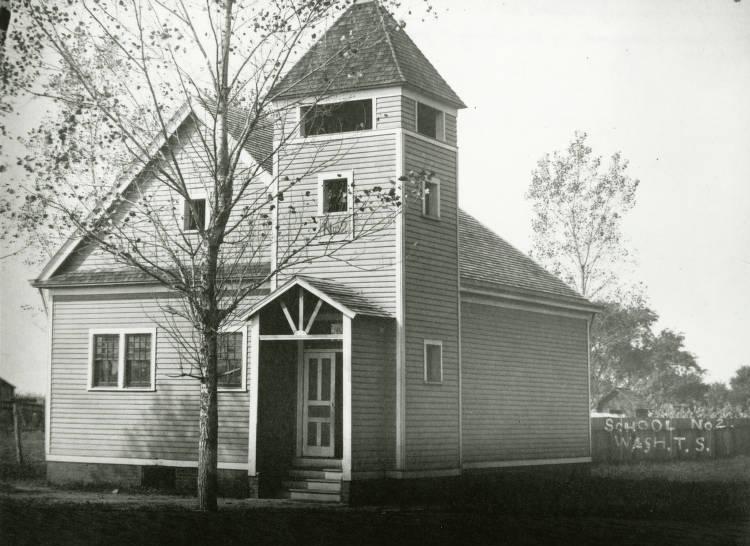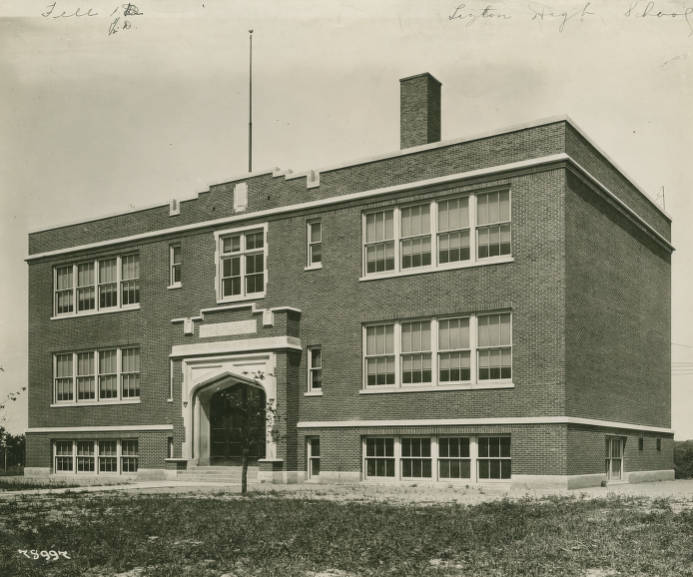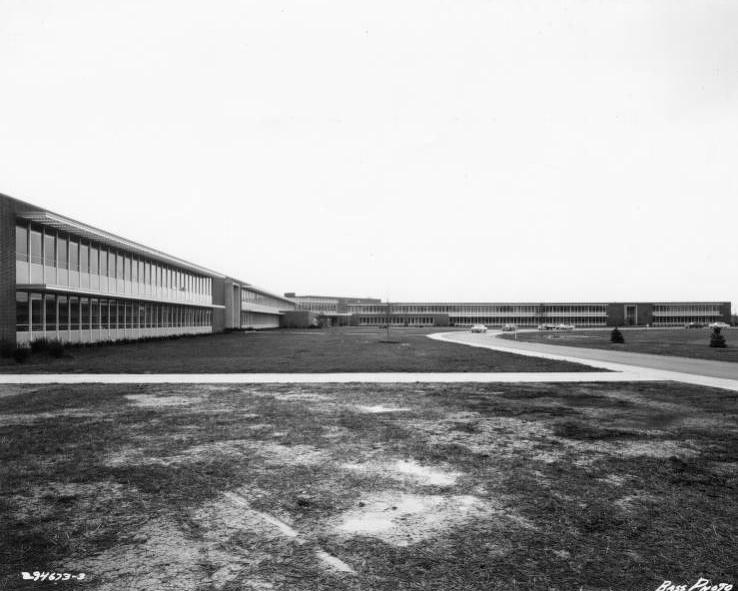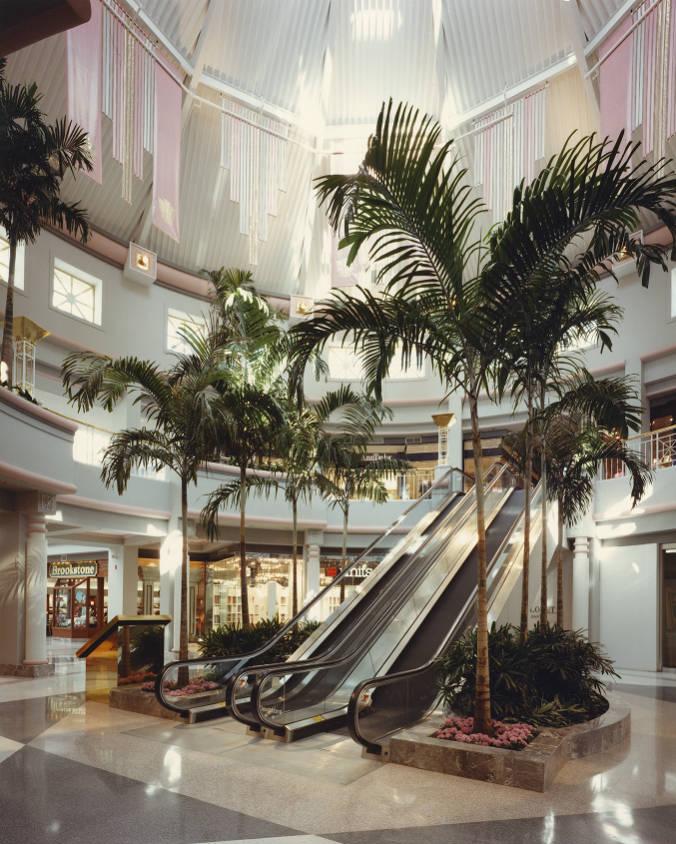Washington Township is located in the northern portion of Marion County. Settlement began in 1819 when John Allison brought his family from Kentucky to homestead along the Winchester State Road (now Allisonville Road). Fourteen years later he platted , the area’s first town. To the southwest the state’s ambitious project stimulated the platting of two villages, and Wellington, in 1837. Another water route, , was the site of grist mills and the village of .

Two rail lines provided a small boost to Washington Township communities. In 1872 Malott Park was platted next to the Wabash, St. Louis, and Pacific Railroad. For a time, the town flourished with churches, a school, a blacksmith shop, and a grocery, but it later foundered and was annexed by Indianapolis. The track was laid for the Chicago, Indianapolis & Louisville Railway (later the Railroad) in 1883, linking Broad Ripple and to the capital.
After 1900, the interurbans and streetcars played an important role in developing residential areas in the southern part of the township, such as Mapleton, , and . Streetcar lines ran north on College Avenue to in Broad Ripple and north on Illinois Street to .

The most important stimulus to growth in Washington Township, however, was the automobile. By 1920, affluent neighborhoods extended north of 38th Street, particularly along North Meridian Street. Residents enjoyed easy access to downtown via newly built roads and bridges over Fall Creek. Farther north and west other commuter suburbs such as were platted in the 1920s and 1930s, along with , , , Shooter’s Hill, and . Census figures record the township’s dramatic growth. In 1910 there were 5,700 residents; by 1920, 12,500; and by 1930 nearly 35,000.
State Route 100 became a significant transportation route in Washington Township primarily as part of a transportation plan to move military troops from Fort Benjamin Harrison to U.S. 31. To complete the route, the construction of a steel truss bridge over the at 82nd Street, between North Keystone Avenue and Allisonville Road, was started in 1942 and completed in 1946. Construction was delayed during World War II due to construction material shortages.

The eastbound lane of the 82nd / 86th Street Bridge, also known as the David Wolf Bridge, is a significant contribution to Indianapolis history due to supporting national military movement objectives and as Marion County’s single remaining example of a combination of Warren pony truss and Parker style steel truss spans. In 1980 and 2009, the bridge underwent major rehabilitation after years of deterioration and collision damage. It was listed in the National Register of Historic Places in September 2006.
Though growth slowed slightly in the 1930s and 1940s, another housing boom occurred north of White River and east of Fall Creek after World War II. Thousands of middle-class families moved to new subdivisions and commuted by car to downtown jobs. Shopping centers, such as and Glendale, opened to serve nearby residents.

By 1950 the township counted 62,000 people; in 1960, 98,000; in 1970, 126,000. Planned communities extended development northwest to the 96th Street boundary, west to Kessler Boulevard North Drive, and north along Allisonville Road. Residential growth slowed beginning in the 1970s, however, after most lands had been developed.
Connecting North Keystone Avenue to Allisonville Road via the David Wolf Bridge has contributed to the heavy commercialization of the area. In 1972 the Edward J. DeBartolo Corporation and Homart Development Company built Castleton Square Mall, the largest shopping mall in Indiana, east of the bridge.
In the early 1970s, west of the bridge, another small luxury mall was constructed, The Fashion Mall. It was next to a shopping center called The Bazaar. Over the years, The Fashion Mall underwent several renovations and expansions. The Bazaar was eventually demolished to make way for the development of the burgeoning 3-mile commercial corridor between Castleton Square Mall and The Fashion Mall, both now owned by Simon Property Group.
The heavily commercialized thoroughfare, connected by the David Wolf Bridge, includes banks, fast-food restaurants, fine-dining restaurants, retail centers, hospitals, allied healthcare services, businesses, and hotels.
In 2007 the Washington Township Fire Department was the first township fire department in Marion County to merge into the Indianapolis Fire Department.
In 2020 Washington Township is predominantly residential, with most commercial growth concentrated along 86th and 82nd Streets, Keystone Avenue, College Avenue, and 38th Street. Two of the township’s major employers include , and .
The Metropolitan School District of Washington Township is another large employer, with a workforce of over 1,200. It has long enjoyed a regional reputation as a well-financed and innovative district. The district includes the Hilltop School for pre-kindergarteners, eight elementary schools, three middle schools, and one high school. Two state educational facilities, The Indiana School for the Deaf and The Indiana School for the Blind and Visually Impaired, are also located in the township.
Though growth has slowed with limited availability of land, Washington Township continues to attract homeowners drawn to the area’s affluent neighborhoods, stable school system, and proximity to downtown.

Is this your community?
Do you have photos or stories?
Contribute to this page by emailing us your suggestions.